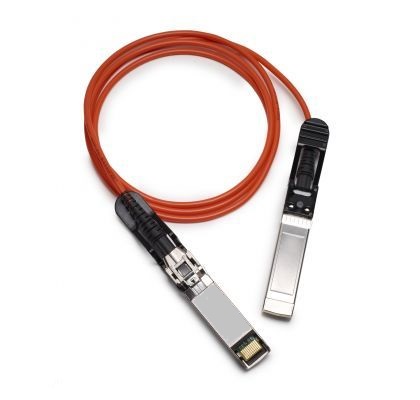- Sales SupportContact Sales
- Call us at: +(86) 15211074652
- Send us a email at: info@zr-fibercable.com
100G Ethernet Deployment with QSFP28 100G Optical Transceivers
In the rapidly evolving world of networking, high-speed data transmission has become crucial for businesses and organizations. The deployment of 100G Ethernet, with its ability to transmit data at a rate of 100 gigabits per second (Gbps), has revolutionized network infrastructures. A key component of this technology is the QSFP28 100G optical transceiver, which offers high performance, reliability, and scalability. This article explores the deployment of 100G Ethernet using QSFP28 transceivers, discussing their features, benefits, and considerations.
QSFP28 100G Optical Transceiver Overview:
The QSFP28 (Quad Small Form-factor Pluggable 28) transceiver is a hot-swappable, compact optical module that supports 100G Ethernet applications. It features four transmit and four receive channels, each operating at a data rate of 25 Gbps. The transceiver supports multiple optical connectors such as LC, MPO, and QSFP28 Direct Attach Copper (DAC) cables. QSFP28 transceivers use different optical technologies, including vertical cavity surface emitting lasers (VCSELs) for short-reach applications and coherent optics for long-reach applications.
Benefits of QSFP28 100G Optical Transceivers:
2.1 High Data Rate: QSFP28 transceivers provide a data rate of 100 Gbps, enabling faster and more efficient data transmission.
2.2 Scalability: The small form factor of QSFP28 transceivers allows for high-density deployments, maximizing port counts in switches and routers.
2.3 Flexibility: QSFP28 transceivers support various optical fiber types, including single-mode and multimode, making them adaptable to different network configurations.
2.4 Interoperability: QSFP28 transceivers are designed to comply with industry standards, ensuring compatibility with networking equipment from different vendors.
2.5 Cost-Effective: The use of QSFP28 transceivers eliminates the need for multiple lower-speed transceivers, reducing overall equipment costs and simplifying network management.
Deployment Considerations:
3.1 Network Infrastructure: Before deploying 100G Ethernet with QSFP28 transceivers, it is essential to assess the existing network infrastructure, including switches, routers, and cabling, to ensure compatibility and optimal performance.
3.2 Fiber Optic Cabling: QSFP28 transceivers support both single-mode and multimode fibers. The choice depends on the required reach and available infrastructure. Single-mode fiber offers longer reach but requires more precise alignment, while multimode fiber provides shorter reach but is more cost-effective for shorter distances.
3.3 Power and Cooling: 100G Ethernet deployments generate higher power requirements and heat dissipation compared to lower-speed networks. Adequate power supply and cooling mechanisms must be in place to support the increased power demands of QSFP28 transceivers.
3.4 Network Management: Managing a network with QSFP28 transceivers requires suitable network management tools to monitor performance, troubleshoot issues, and ensure optimal utilization of resources.

Implementation Best Practices:
4.1 Testing and Validation: Before deployment, thorough testing and validation of QSFP28 transceivers are essential to identify any potential compatibility issues, signal degradation, or performance bottlenecks.
4.2 Redundancy and High Availability: To ensure uninterrupted network connectivity, implementing redundancy and high availability mechanisms, such as link aggregation and failover protocols, is recommended.
4.3 Firmware and Software Updates: Regularly updating the firmware and software of networking equipment, including QSFP28 transceivers, helps ensure compatibility, security patches, and performance enhancements.
4.4 Monitoring and Performance Optimization: Utilizing network monitoring tools and techniques enables proactive monitoring of QSFP28 transceivers' performance, optimizing network capacity, and identifying potential bottlenecks.
The deployment of 100G Ethernet with QSFP28 100G optical transceivers offers businesses and organizations a high-performance, scalable, and cost-effective solution for their networking needs. With their ability to support high data rates, flexibility, and interoperability, QSFP28 transceivers have become a key component in modern network infrastructures. By considering factors such as network infrastructure, cabling, power requirements, and management, organizations can successfully deploy and optimize 100G Ethernet using QSFP28 transceivers, enabling efficient data transmission and supporting future growth in network demands.
You might be interested in
We use cookies to ensure that we give you the best experience on our website. By clicking on "Accept" or continuing to use this site, you agree to our use of cookies in accordance with our Cookie Policy .You can refuse the use of cookies here.
Accept

